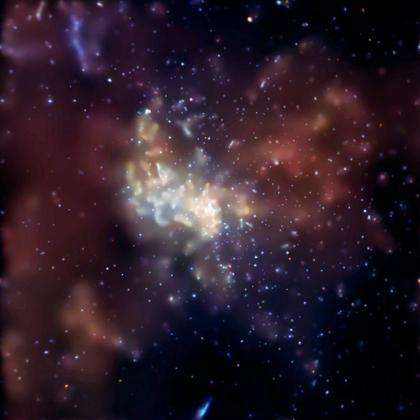The Milky Way's supermassive black hole

Supermassive black holes - objects with masses of millions or even billions of suns - are found at the nuclei of galaxies. Our Milky Way galaxy, for example, has a massive black hole at its core, albeit one that is relatively quiescent. Despite their reputation for being implacable sinks for matter and energy, both radiation and matter can be ejected from the vicinity of a black hole, often in powerful jets, when it is ringed by a disk of matter and material accretes onto it.
Thus in dramatic cases, like quasars, nuclear black holes are responsible for some of the most spectacular phenomena in the cosmos.
A black hole is so simple that it can be completely described by only three parameters: its mass, its spin, and its electric charge. The supermassive black hole at the center of the Milky Way, because it is example closest to us, has been a prime target for study by scientists trying to measure these parameters and understand how they influence the behavior of the region. For example, why it is that our black hole is so quiescent, while bright jets and luminous emission are seen in more dramatic cases?
CfA astronomer Avi Loeb, his recent student Avery Broderick, and two colleagues have modeled the nature of the Milky Way's black hole. The mass has been estimated by other scientists who, by watching the motions of stars in its vicinity, find that it is about 4.3 million solar-masses. (The charge of the black hole remains unknown.)
The CfA team used results from ultra-high spatial resolution millimeter wavelength astronomy to measure the angular size of the weak emission around the black hole; the equipment has an angular precision roughly equivalent to seeing a dime on the moon. Based on their analysis of the data, they find that the Milky Way's central black hole spin is at best modest - although whether this explains why the emission is weak is still uncertain. They also conclude that the millimeter emission is slightly extended - it has an axis ratio of about 2.3, but the orientation does not appear to align with any other known features.
Not least, their models strongly suggest that the emission comes from some kind of an accretion process. The new result is just the opening salvo that indicates astronomy has entered an epoch in which it will be able to study black hole physics directly using high spatial resolution techniques.
Provided by Harvard-Smithsonian Center for Astrophysics















.jpg)



